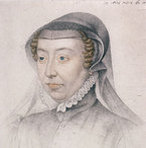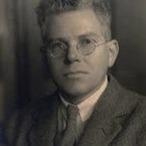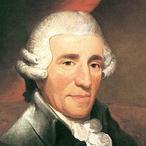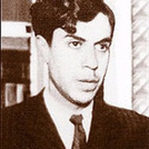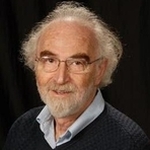|
The Wigmore Hall patrons turned out in full force to hear the exquisite voice of Venetian contralto Sara Mingardo. Accompanied by the Accademia degli Astrusi, conducted from the ‘cello by Federico Ferri, Mingardo spun a tail that lead us on a journey through 18th century Italian language repertoire, via some well known (Handel, Pergolesi & Vivaldi) and some lesser known (Galuppi, Martini) composers.  Sara Mingardo, contralto Sara Mingardo, contralto Opening with a series of resolved dissonances, Pergolesi’s Salve Regina starts with a haunting movement that works only when both the ensemble and the artist are moving as one, dynamically and emotionally. Mingardo and the players of the Accademia degli Astrusi were perfectly attuned to each other and to the nuances of the piece, with Mingardo’s moves into the chest register particularly compelling. Her messa di vocein the second movement, “Ad te clamamus”, were a masterclass in the art, while the Accademia degli Astrusi made beautiful work of the syncopated orchestration of “Et Jesum, benedictum”. Concerto a Quattro No.1 in G minor was the first offering from Baldassare Galuppi. Ferri and his team produced a very stately and intimate Grave e adagio, with fiery and vigorous entrances from the continuo in the Spiritoso. The Allegro was a lilting dance in minuet time, and credit must be given to Lorenzo Colitto on first violin for his handling of the more difficult passages. The cantata La Scusa was the second offering from Galuppi, organised into two recitative-aria couplings. Mingardo’s tender treatment of the first aria captivated from the onset, with beautiful phrasing and employing rich changes in dynamic and colour throughout the range. We returned from the interval to the Concerto a 4 pieno in D by Padre Giovanni Battista Martini. Federico Ferri has been involved in a publishing project relating to Martini’s music, and his direction here is indicative of his understanding both of the score, and of the composer. The Accademia degli Astrusi treated the chromaticism of the central Adagio movement with due care, and we were rewarded with a truly great performance. Handel’s powerful aria “La crudele lontananza” followed, with Mingardo’s voice ringing powerfully in the upper part of the range. Her characterisation here was pure heroic-Handel: strong and passionate. Rather than retiring from the stage, Mingardo sat at the back as the Accademia degli Astrusi performed Vivaldi’s Concerto madrigalesco in D minor. The opening conjured up and image of the Sun rising across the Venetian Lagoon. At the conclusion of the concerto, Mingardo rose and proceeded to sing the magnificent Nisi Dominus. In the sombre, dark and mysterious fourth movement, “Cum dederit”, Mingardo wove an enchantment that captivated the audience, particularly during the crescendo of the rising chromatic line “fructus ventris” and the sudden pianissimo on the sustained note at the end of the phrase. The encore was “Ombra mai fu” from Handel’s Serse. This seems to be a favourite encore piece for Mingardo, and she performed it with style and elegance, displaying a beautiful legato and an intuitive understanding of the aria’s meaning. The concert was a delight, pure joy to listen to, and one which I would happily attend again. Each piece complimented the others perfectly, and it was nice to hear a piece of Handel I was not familiar with. Both Sara Mingardo and the Accademia degli Astrusi were on top form, and I look forward to their return to the Wigmore Hall.
0 Comments
Today the Wigmore Hall once again played host to the sultry voice of Venetian Contralto Sara Mingardo. The theme of the concert was a songbook of Ancient Italian Airs, compiled by Alessandro Parisotti, with a couple of interlopers such as an aria from Handel’s Alcina. The song book includes an air attributed to Giovanni Pergolesi, “Se tu m’ami”, which is now believed to have been composed by Parisotti himself. The song book, called Arie antiche: ad una voce per canto e pianoforte and published in 1890, was Parisotti’s major claim to fame.
Performing with Mingardo were Benjamin Bayl, harpsichord, and Richard Sweeney, theorbo. Benjamin Bayl is usually seen in the role of conductor having taken part in productions such as Il parnaso confusoat London’s South Bank Centre and a critically acclaimed Ariodante with English Touring Opera. Richard Sweeney has extensive performance experience, having played with renowned ensembles including The Kings Consort, Orchestra of the Age of Enlightenment, Academy of Ancient Music, and Les Talens Lyriques. The first composer selected by Mingardo was the Neapolitan Andrea Falconieri. Of the two song chosen it was the second, “O bellissimi capelli”, which made the greatest impression. Mingardo’s lilting, smooth voice flowed through the verses, while the intuitive accompaniment from Bayl and Sweeney ensured the light dynamic of the piece was well supported. Next was Antonio Lotti, a composer hailing from Mingardo’s native Venice, who thought to have influenced Johann Sebastian Bach and George Frederic Handel. The air chosen, “Pur dicesti, O Bocca bella”, was tenderly sung, with some beautifully light touches on the arpeggios. Two more Venetians followed on from Lotti. “Sebben crudele”, by Antonio Caldara, is a famous piece, sung by most singers of all fach at one point in their careers. It was performed with dramatic flair by Mingardo, whose ardent, lyrical presentation, and intelligent ornamentation, communicated perfectly the emotion of the piece. Vivaldi’s “Un certo non so che” was next, and it was here that Mingardo moved to a more “operatic” execution. The melancholic “Quella fiamma che m’accende”, by Benedetto Marcello, provided the first opportunity for Mingardo to show off her rich, powerful lower register. The dives into the chest voice were both fierce yet controlled, with Mingardo in complete control of her instrument. The disputed “Se tu m’ami” was as emotive, yet it was more intimate, almost conversational in its delivery. Mingardo and Bayl then left the stage, leaving Richard Sweeney to perform Alessandro Piccinini’s beautiful Toccata IV for theorbo. Sweeney’s playing bought out the lilting nature of the piece, and it reminded me of being on a long train journey, through the countryside, watching the landscape out of the window. Mingardo and Bayl returned to finish the concert with four contrasting songs. The first, “Intorno all’idol mio” by Antonio Cesti, saw Mingardo’s warm, rich tone project powerfully through the hall. After this came Handel’s “Ah, mio cor, schernito sei” from the opera Alcina, which was the highlight of the concert. The dark, passionate phrases were beautifully handed, and there was a lovely resonance in Mingardo’s lower register. Another opera aria, “Se il ciel mi divide” from Niccolò Piccinni’s Alessandro nell'Indie, was the penultimate offering from the trio, with Mingardo at her most aggressive, modulating the dynamic spectacularly in the syncopated sections. The last piece was “Nel cor più non mi sento” by Giovanni Paisiello. Mingardo managed to make the wistful, dreamy music engaging, imparting the nostalgic remembrances of an older person remembering the fires of youth. The encore was the delightful “'Si dolce e'l tormento” by Claudio Monteverdi. It was an excellent way to end the concert, with each of the trio bringing an educated understanding to this frequently performed song. The last verse was so tender, that one was left with a lightness of being which lasted past the end of the fading chords. It was a delightful concert and another elegant triumph for Mingardo. Having seen Sara Mingardo perform at the Wigmore Hall some time ago, I was relishing the chance to see her again. My chance came in the form of a wonderful concert at the barbican, promising not one, but two of my favourite pieces: "Cum dederit dilectus suis somnum" from Vivaldi's "Nisi Dominus", and "Fac ut Portem, Christi mortem" from Pergolesi's Stabat Mater. The billing stated that Mingardo would be joined by the wonderful Anna Caterina Antonacci: unfortunately though, Antonacci was indisposed. So instead Susan Gritton, (who I had seen at the Queen Elizabeth Hall only a few days before in Mozart's "Die Entführung aus dem Serail") gallantly stepped in to save the day. Due to Antonacci's last minute unavailability, the first piece on the program was changed from Porpora's Salve Regina to Handel's Concerto Grosso in G minor, Op 6, No 7: not a problem, in my opinion! The performance was both intuitive and stylish, seamlessly moving from one tempo to another. The highlight must surely be the inspired performance by lead violinist Catherine Martin in the solo section. Next to come was Vivaldi's Nisi Dominus. A beautiful yet melancholic piece, even the faster movements are tinged with sadness. The staccato rhythm of the opening movement, "Nisi Dominus", contrasts with and compliments the impossibly smooth, velvet quality of Mingardo's voice. The combination is repeated again in the penultimate section "Sicut Erat". The highlight of the piece for many was the fourth movement: "Cum Dederit". The slow, lilting 12/8 time signature, and its crotchet/quaver pedal relentlessly drive the piece onwards. On top of this, interspersed by the occasional flourish by the higher strings, Mingardo's warm, rich tone rides like a slow yet unstoppable wave through the orchestra straight to the soul. The long, well controlled phrases hold one in their grip, while her excellent "mezza di voce" through the longest notes and phrases induced an atmosphere of melancholic pensiveness throughout audience. The lively "Sicut Sagittae" which followed provided perfect counterbalance to the sombre "Cum Dederit". The light yet powerful "Gloria Patri" again enchanted those present, with the heavenly interplay between the solo violin and the voice on the phrase "et spiritui sancti". Mingardo showed a very intimate understanding of the text, vocally enunciating each and every nuance. The final movement, the "Amen" was well paced, and an exciting close to a fantastic piece. The video below is of Mingardo performing the "Cum Dederit". Please scroll down further for the last part of the concert. At only 26 years of age, Giovanni Battista Pergolesi died from tuberculosis in Pozzuoli, near Naples in Italy. Like Mozart after him, Pergolesi was a very talented composer who left the world far too young. The Catholic Encyclopaedia states that he was: "of frail constitution" and that "he shortened his career by irregular conduct" - whatever that may mean. He wrote many operatic works, mainly opera buffo (comedy), though many works claimed to be by Pergolesi have subsequently turned out to be by other composers. The work for which he is most remembered however is the "Stabat Mater", written shortly before he died. Composed for male soprano, male alto, and orchestra, it was commissioned by the Confraternità dei Cavalieri di San Luigi di Palazzo. In this performance, both artists were female. As stated above, Anna Caterina Antonacci was originally to have taken the soprano role. A last minute cancellation left us with the more than able talents of Susan Gritton. Given that there could not have been much time for Gritton and Mingardo to build a rapport with respect to the piece, the interplay between the two was surprisingly well managed. Many of the movements were duets, requiring both emotional and technical collaboration. The first movement, "Stabat Mater Dolorosa", was full of suspensions and dissonances from the onset: initially in close harmony, then later with Mingardo in the lower octave. The series of alternating dissonance/resolution fills the listener with expectation and satisfaction. Both singers performed the movement with a high level of vocal "purity", and with complementary volume. It was towards the end of the piece, however, that the real jewel of the "Stabat Mater" was revealed. In the sublime "Fac ut Portem", Mingardo excelled herself. The long legato lines, with stark orchestral support, were performed with other-worldly purity, though always humble and true to the score. Yet it was the ornament at the end of the movement which excited most: Mingardo moved slowly down over a held chord in the orchestra to a low Db! And what resonance there was in the lower chest register. Mingardo sounded fuller in the extreme lower range than some Tenors! There was a palpable air of excitement, which was held until then end of the movement. Gritton and Mingardo performed the final duets beautifully, but as I left the auditorium, the hot topic on everyone's lips was that sensational low Db. A recorded version, complete with the finishing ornament, can be heard below. Recently, I went to see a concert at the Wigmore Hall in Wigmore Street, London. Here I saw Sara Mingardo, a Contralto hailing from Venice. Sara is one of the few true Contraltos in the Classical music world, other notables being Ewa Podles, Marijana Mijanovic, Sonia Prina, and Nathalie Stutzmann. (The Contralto is the lowest of the female singing voices and in classical music, most performers that sing Contraltos roles are in fact Mezzo Sopranos, which is the next voice up).
Mingardo is not what many would view as a typical Contralto - visions of very large women singing roles like Wagner's Erda, for example, come to mind - yet she has a rich, dark tone, and a freely resonating chest register, coupled with stunning flexibility, which allows her to perform baroque music with ease. With respect to her performance, Mingardo was humble and understated, yet she had great presence and was able to carry the emotions of her audience with her. I look forward to hearing her again. Sara sang a range of Arias, starting with three from Handel's Opera Radamisto: Cara Sposa, amato bene Perfido, di'a quell'empio tiranno Ombra cara She then sang two Arias from Handel's Tolomeo: Se un solo èquel core Stille amare And finished by performing a secular Cantata by her Venetian compatriot Antonio Vivaldi: Cessate, omai cessate She gave one encore, performing Ombra mai fu, from Handel's Xerxes. Do check out her album Sara Mingardo: Contralto - a fantastic showcase of her vocal talents. The album was released by the Naïve Recording Label. |
Categories
All
Archives
September 2014
|
MOST VIEWED POSTS
© James Edward Hughes 2013
 RSS Feed
RSS Feed
